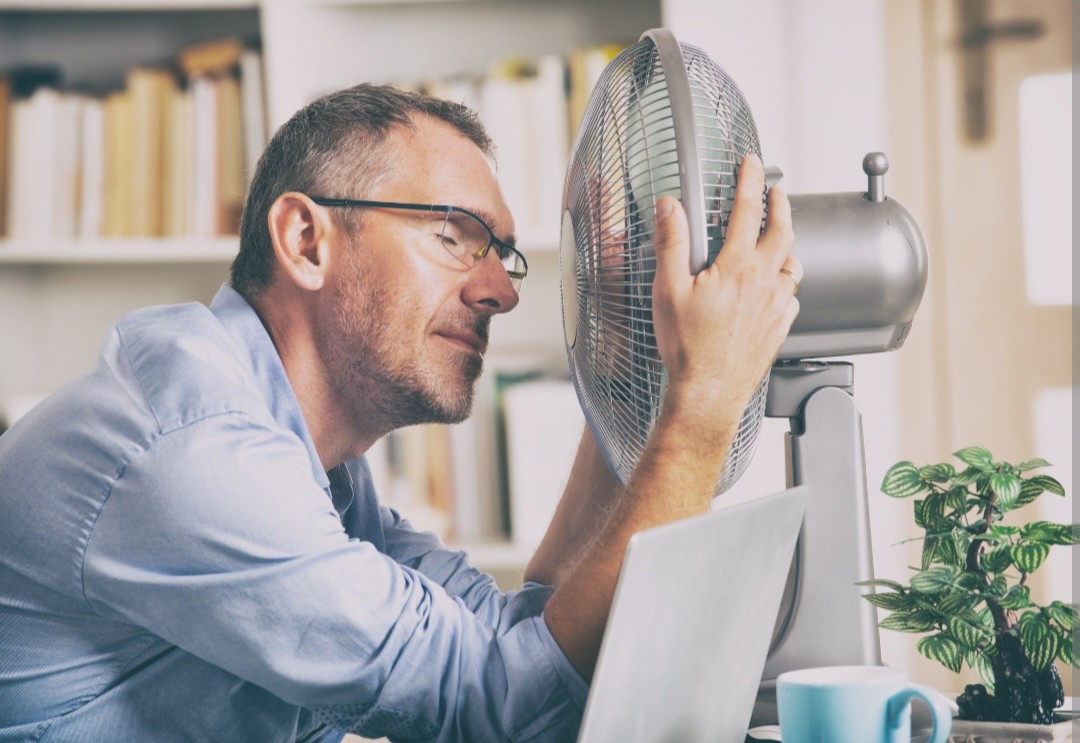Hot flashes are typically associated with menopausal women, but recent research has shown that men can also experience this phenomenon. Hot flashes among men are often a result of hormonal changes, particularly a decrease in testosterone levels. These flashes can be characterized by sudden feelings of warmth, sweating, and flushing of the skin.
While the exact cause of hot flashes in men is still being studied, it is believed that they may be linked to conditions such as obesity, diabetes, or certain medications. Treatment options for hot flashes in men are similar to those for women and may include hormone therapy, lifestyle changes, and medication. It is important for men experiencing hot flashes to consult with a healthcare provider to determine the underlying cause and develop an appropriate treatment plan.
Symptoms and Manifestations of Hot Flashes in Men
Hot flashes are typically associated with menopausal women, but they can also occur in men. The symptoms and manifestations of hot flashes in men are similar to those experienced by women, but they may be less common and less severe. Men who experience hot flashes may feel sudden intense heat, sweating, and flushing of the face and upper body.
These episodes can last anywhere from a few seconds to several minutes and may be accompanied by a rapid heartbeat, dizziness, and feelings of anxiety. Some men may also experience chills after a hot flash, as the body attempts to regulate its temperature. Hot flashes in men can be triggered by a variety of factors, including stress, anxiety, alcohol consumption, spicy foods, and certain medications.
While hot flashes in men are typically not a cause for concern, they can be uncomfortable and disruptive to daily life. If hot flashes become frequent or severe, it is important to consult with a healthcare provider to rule out any underlying medical conditions. Treatment options for hot flashes in men may include hormone therapy, lifestyle changes, and medications to help manage symptoms. Overall, understanding the symptoms and manifestations of hot flashes in men can help individuals better cope with this common yet often overlooked condition.

Risk Factors and Causes of Hot Flashes in Men
Hot flashes are commonly associated with menopausal women, but they can also affect men. The causes of hot flashes in men can vary, but certain risk factors may increase the likelihood of experiencing them. One common cause of hot flashes in men is hormonal imbalances, specifically a decrease in testosterone levels. This hormonal shift can lead to sudden feelings of heat and flushing in the face and upper body.
Other risk factors for hot flashes in men include obesity, a sedentary lifestyle, excessive alcohol consumption, and certain medical conditions such as diabetes or thyroid disorders. Additionally, certain medications, such as antidepressants or opioids, can also trigger hot flashes in men. Stress and anxiety have also been linked to the onset of hot flashes. It is important for men experiencing hot flashes to consult with a healthcare provider to determine the underlying cause and develop a treatment plan.
Lifestyle changes, such as regular exercise, a healthy diet, and stress management techniques, may help reduce the frequency and severity of hot flashes. Hormone replacement therapy may also be an option for some men experiencing severe hot flashes due to hormonal imbalances. By addressing the underlying risk factors and causes of hot flashes, men can better manage this common symptom and improve their overall quality of life.
Recent Advances in Understanding Male Hot Flashes
Recent advances in understanding male hot flashes have shown that these symptoms are not just limited to women going through menopause. While hot flashes are commonly associated with menopausal women, studies have found that men can also experience these sudden feelings of intense warmth and sweating. Research has revealed that male hot flashes may be linked to hormonal changes, particularly decreases in testosterone levels.
Additionally, certain medical conditions such as thyroid disorders and certain medications can also contribute to the occurrence of hot flashes in men. Understanding the underlying causes of male hot flashes is crucial in order to provide appropriate treatment and relief for those experiencing these symptoms. Furthermore, recognizing that hot flashes are not exclusive to women can help reduce the stigma surrounding this issue and encourage men to seek help and support. Overall, the recent advancements in understanding male hot flashes have shed light on a previously overlooked phenomenon and have paved the way for more targeted and effective treatments for those affected.
Treatment Options for Hot Flashes in Men
Hot flashes are a common symptom experienced by men as they age, often associated with hormonal changes and fluctuations. There are several treatment options available to help alleviate these uncomfortable symptoms. One of the most common treatments is hormone replacement therapy, which involves taking medications to replace the hormones that are lacking in the body.
This can help regulate hormone levels and reduce the frequency and intensity of hot flashes. Another treatment option is lifestyle changes, such as avoiding triggers like spicy foods, caffeine, and alcohol, as well as maintaining a healthy weight and regular exercise routine. Some men may also find relief from hot flashes by using alternative therapies such as acupuncture, herbal supplements, or relaxation techniques like yoga or meditation. In more severe cases, doctors may prescribe medications such as antidepressants or anti-seizure drugs to help manage hot flashes.
It is important for men experiencing hot flashes to speak with their healthcare provider to determine the best treatment option for their individual needs. By exploring these various treatment options, men can find relief from hot flashes and improve their overall quality of life.
Lifestyle Modifications to Manage Hot Flashes in Men
Men who experience hot flashes can often feel frustrated and embarrassed by this common symptom. However, there are several lifestyle modifications that can help manage hot flashes and improve quality of life. One important step is to maintain a healthy weight through regular exercise and a balanced diet. Excess weight can contribute to hormonal fluctuations that trigger hot flashes, so losing weight can help reduce their frequency and intensity. Additionally, avoiding triggers such as spicy foods, caffeine, and alcohol can also help minimize hot flashes.
Stress management techniques, such as deep breathing exercises, meditation, and yoga, can help regulate hormone levels and reduce the frequency of hot flashes. Another key lifestyle modification is to ensure a cool sleeping environment, as nighttime hot flashes can disrupt sleep and exacerbate other symptoms. Keeping the bedroom cool and using moisture-wicking bedding can help improve sleep quality and reduce the occurrence of nighttime hot flashes. Finally, wearing lightweight, breathable clothing and staying hydrated can also help manage hot flashes throughout the day. By implementing these lifestyle modifications, men can effectively manage hot flashes and improve their overall quality of life.

